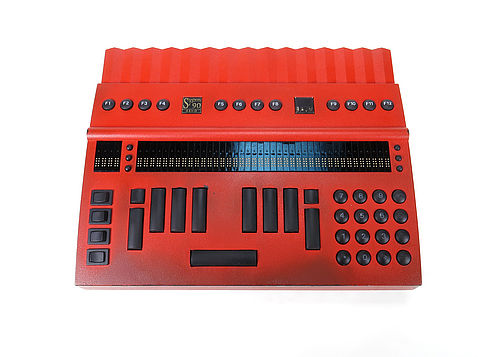
BAUM David Pro System 90, 1992
Object of the month June 2020

SDTB
Making notes is an indispensable part of any psychotherapist’s work. Cordula von Brandis-Stiehl is a doctor and psychotherapist that has been completely blind since the end of her studies in 1990. She has, however, been able to successfully practice her profession despite numerous hurdles. In 1992 she obtained a David Pro computer for blind and visually impaired people, which she, among other things, used as a substitute for paper and pen in her work. It was the first of its kind on the market.
The David Pro is a special-purpose computer for blind and visually impaired people that performs two basic functions: It is a writing instrument as well as a computer output device. It enables blind and visually impaired people to work with most conventional standard software without any assistance.
The special feature of this computer is the implementation of Braille script in the hardware and the software. Since the 19th century, blind and visually impaired people have been using the Braille writing system of tactile raised dots. A Braille display screen uses electromagnetic pins to dynamically raise the dots that form the readable Braille script. A text-to-speech system can also be implemented but spelling mistakes can only be detected when using the Braille screen. A special Braille keyboard allows the raised dot script to be typed quickly. In contrast to printed Braille, which consists of six dots, computer Braille utilizes an eight-dot system. The raised dot script can thus also be used to depict special characters.
Computers were already expensive in the 1990s but special-purpose devices like this were even more so. Frau von Brandis-Stiehl often referred to her David Pro as "my Golf cabriolet" because, at 30,000 D-Mark, it cost the same as her favorite car at that time. At an average cost of around 6,000 Euros, devices of this kind are still very expensive today. In Germany, these expenses are in many cases covered by the health insurance companies.
